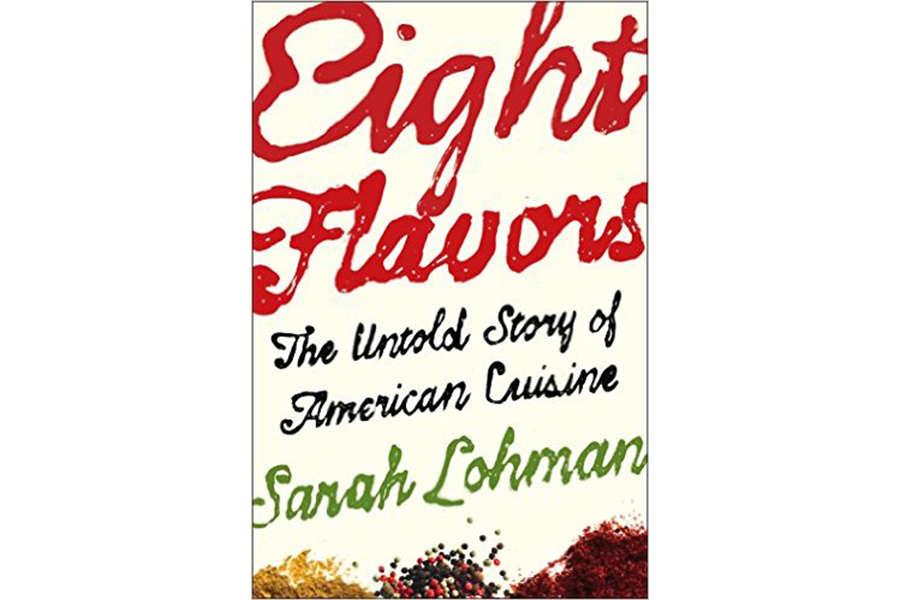'Eight Flavors' is part travelogue, part history, and part recipe book
Loading...
For several decades in the mid-19th century, German speakers outnumbered Spanish speakers in Texas. According to the stories, one of these German immigrants, a man named William Gebhardt, first tasted chili in San Antonio, at one of the street stands operated by the chili-cooking San Antonian women known as Chili Queens. Inspired, Gebhardt opened his own chili cafe, but he couldn't manage to chop enough chili peppers and garlic to serve his patrons. He needed something delicious, but fast. He started experimenting; he mixed black pepper, oregano, poblano peppers, garlic and cumin, ran in through a meat grinder, dried it and pulverized it. And thus was born chili powder.
This quirky, multicultural origin tale for one of America's most ubiquitous spice mixes is typical of the stories in Eight Flavors, a new book by food blogger and historian Sarah Lohman. Lohman, who runs the historic gastronomy blog Four Pounds Flour, argues in "Eight Flavors" that the story of American cuisine can be told through eight dominant flavors: black pepper, vanilla, MSG, chili powder, curry powder, soy sauce, garlic and Sriracha. One part travelogue, one part history, and one part recipe book, "Eight Flavors" is a fascinating and thought-provoking tour of the history of America as told through the lens of its culinary innovations.
To select the eight flavors, Lohman gathered the most influential cookbooks of the past two centuries, listed the most commonly mentioned flavors in each of these books, and graphed them to see how often they appeared, noting which flavors became classics and which turned out to be mere fads. She devotes one chapter to each of her chosen flavors, describing the immigrants, the soldiers returning from foreign wars, and the innovators who demanded and introduced new American flavors. She tells us the story of the slave boy who figured out how to pollinate vanilla pods; the Indian chef who dazzled New York audiences with his delicious creations at the turn of the 20th century; and the immigrant who invented Sriracha one month after fleeing to the United States from the turmoil of the Vietnam War.
Besides introducing us to these historical figures, Lohman also takes us on a journey around North America. To research her book, she visited many of the places where these flavors trickled into American cuisine; she also met some of the people who are still producing these flavors today, including chili farmers in Mexico and the owners of the Huy Fong factory in California where Sriracha is made. She intersperses her narrative with recipes, from historical recipes such as garlic butter from the 1890s to modern recipes such as warm vanilla cakes that appeared in The New York Times in the 2000s. She also accompanies these stories with illustrations, both of her beloved eight flavors and of the men and women that helped make them part of American cuisine, which Lohman argues is one of the most complicated food cultures in the world.
Lohman's book is a story of how cuisine evolves. But it's also a history of the cultures that have contributed to America and of the waves of immigrants that have come to the United States over the centuries. These components of Lohman's story range from inspiring and hopeful to brutal and shameful. She tells us about cross-cultural communication, such as when New England spice merchants respected the Sumatrans who sold them black pepper and thus helped make that spice quintessential to American palates. But she also tells us about hatred and fear against Italian and Chinese immigrants in the 19th century, and about draconian immigration policies, such as the restriction against non-white immigration that prevented the most famous Indian chef in New York in the early 20th century from receiving his American citizenship.
Lohman's book will stay with readers on two levels. Lohman's attention to detail is meticulous, and she presents more than a few intriguing facts about the history and culture of food. With these in mind, readers will find themselves noticing aspects of American cuisine that they always took for granted. For example, Lohman explains that in the nineties, servers bringing cracked black pepper to guests in mid-level chain restaurants became a trend. Soon after finishing "Eight Flavors," I visited such a restaurant, and I noticed my server doing just that. I'd seen it a hundred times before, but I'd never thought of it as a unique and pervasive part of American gastronomic culture until that moment.
On another level, however, Lohman's book speaks to a universal truth about the United States. Her book makes a persuasive argument that there's no such thing as a static American culture, a sacred set of traditions that should be, or even can be, preserved in stone. Instead, she shows that American gastronomic culture is ever-evolving and ever-changing to embrace the needs and values of all Americans – just like, at least in theory – America itself.






